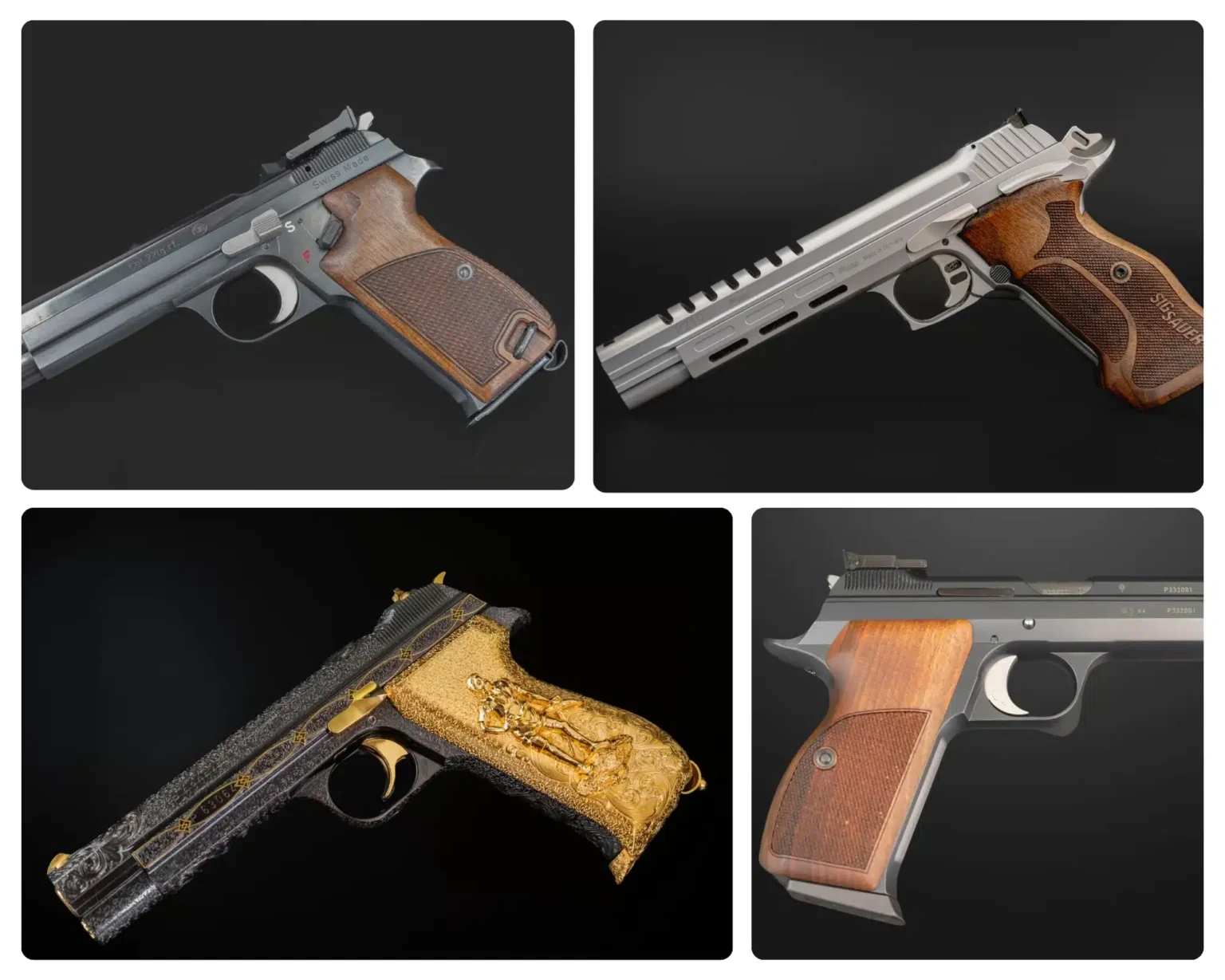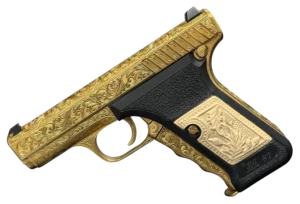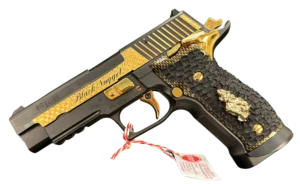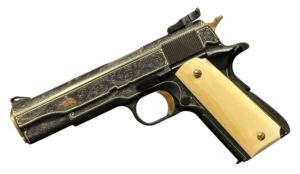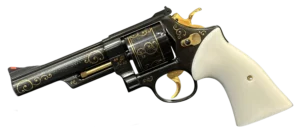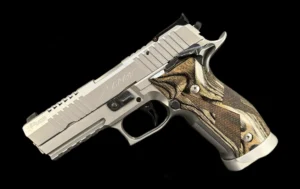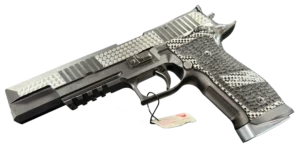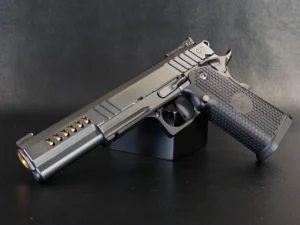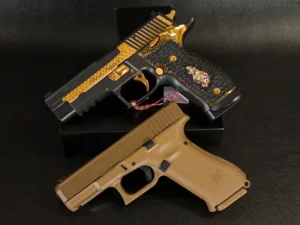Key Takeaways:
- The Sig P210 isn’t just precise—it’s personal: There’s a reason shooters still rave about the P210 decades after its debut. With hand-fitted parts, a fixed barrel, and that buttery-smooth trigger, this isn’t just a tool—it’s an experience. It feels less like a factory product and more like something crafted just for you.
- It bridged two worlds: battlefield grit and competition finesse: How many pistols can claim they were trusted by soldiers and beloved by world-class competitors? The P210 didn’t just serve—it dominated, proving you can build something tough enough for combat and refined enough for a podium finish.
- Legacy isn’t about age—it’s about relevance: The P210 didn’t survive all these years by sitting on a shelf. It evolved. From the classic Swiss military models to the modern American P210A, it’s adapted without losing its soul. That’s what keeps it alive—not nostalgia, but performance that still holds up.
There are a lot of pistols that come and go, but some manage to leave a lasting mark. The Sig Sauer P210 is one of those rare few. Built with the kind of care and precision you’d expect from Swiss watchmakers—because, well, it’s Swiss—it earned a spot in history not just because it shot straight, but because it did so with elegance and consistency.
Originally crafted by the Schweizerische Industrie Gesellschaft (SIG) and first introduced in 1949, the P210 wasn’t just another military sidearm. It was a statement. One that said, “Yes, a handgun can be built to the same standard as a fine piece of machinery.” And it wasn’t long before the Swiss Army took notice, making it their standard-issue sidearm for decades.
But what really set it apart? What made it more than just another gun in the armory? Let’s dig into what made—and still makes—the P210 such a legend.
Built Different: The Craftsmanship That Made the P210 Stand Out
When people talk about the P210, the first thing they usually mention isn’t how it looks. It’s how it feels. The entire pistol was hand-fitted, meaning that every slide, barrel, and internal part was carefully matched during assembly. That level of attention doesn’t just show—it performs.
Now, let’s talk about that fixed barrel. Most semi-automatics use a tilting barrel design that moves during recoil. The P210 doesn’t. Its barrel stays locked in place, attached directly to the frame. Less movement means more accuracy. Simple as that.
And then there’s the trigger. Oh, that trigger. Single-action, crisp as a snap of your fingers, and clean as a whistle. No sponginess, no guessing. Just a clean break, every time. Even today, shooters still rave about it.
The design wasn’t without quirks, though. For example, the magazine release is located at the bottom of the grip—unusual by modern standards. However, remember that this was a military sidearm designed for precise, deliberate use. Speed wasn’t everything; precision and reliability were.
Not Just a Showpiece: The P210 on the Battlefield and the Firing Line
A pistol built this well wasn’t going to sit in a drawer. When the Swiss Army adopted the P210 in 1949, it was a clear signal: they wanted their soldiers carrying not just any sidearm, but one that could actually deliver pinpoint shots under pressure. And for over two decades, that’s exactly what it did.
But here’s where things get even more interesting. While most military pistols are practical tools, the P210 managed to straddle the line between duty weapon and competitive legend. It wasn’t just used in combat—it dominated shooting competitions.
If you’ve ever seen the ISSF 25m Center-Fire Pistol event, you know how demanding it is. The P210 thrived in that environment. Its accuracy, balance, and smooth operation made it a darling of serious target shooters.
You don’t often see that kind of crossover—military pistols that also win trophies. But the P210? It pulled it off with style.
From Mil-Spec to Masterpiece: The Many Faces of the P210
Like any great design, the P210 didn’t stay static. Over time, SIG introduced a number of variants to adapt to shifting needs and markets. The original, known as the P210-1, was strictly military. Built tough, functional, and straightforward.
Then came the P210-2, which made a few tweaks for the civilian world—slightly simplified internals and a more intuitive magazine release. Still every bit a P210, just a bit friendlier.
For the competition crowd, SIG rolled out the P210-5 and P210-6. These models featured adjustable sights and were fine-tuned for accuracy. Think of them like sports cars tuned for the track.
Then came the P210A—the American version. This one shook things up a bit more. Magazine release moved to the side (finally), increased mag capacity, and modern machining techniques. Some purists turned up their noses at first, but the performance speaks for itself. It’s a respectful nod to the classic with just enough modernization to stay competitive.
Each version kept the P210 DNA intact. Steel frame, superb trigger, precise machining—but tailored just enough to meet new demands.
Still in the Game: Why the P210 Isn’t Going Anywhere
You’d think a pistol designed in the 1940s would be fading into obscurity by now. But the Sig Sauer P210 is still making waves. Why? Because when you get the fundamentals right—accuracy, reliability, feel—you don’t need to reinvent the wheel every decade.
SIG knows this. That’s why they brought the P210 back in modern form, most notably with the P210 Target. It keeps the soul of the original—fixed barrel, stellar trigger—but adds practical updates like better ergonomics and sights that suit today’s shooters.
Collectors still chase down the vintage models. Competitive shooters still use them. And newer enthusiasts, many of whom weren’t even born when the first P210 hit the scene, are discovering its magic for the first time.
It’s rare for a handgun to bridge generations like this. Usually, they either fade out or get replaced. But the P210? It keeps earning its place—one shot at a time.
Final Thoughts: A Gun That Feels Like a Legacy
The Sig Sauer P210 isn’t just another classic—it’s a benchmark. A firearm that didn’t just meet expectations, but redefined them. Whether you’re holding a post-war military issue or a sleek modern Target model, the P210 whispers the same message: “You’re holding something special.”
It’s the kind of gun that doesn’t shout for attention. It earns it. Through performance, craftsmanship, and a level of care that’s all too rare today. And that’s why, decades later, shooters are still talking about it—and still reaching for it—whenever accuracy really matters.
Frequently Asked Questions
It’s all in the design. The P210 uses a fixed barrel that’s directly attached to the frame, which means there’s less movement during recoil, so shots stay tight and consistent. Pair that with its hand-fitted parts and one of the cleanest single-action triggers you’ll ever feel, and you’ve got a recipe for serious precision.
Yep. The Swiss Army adopted it in 1949 and continued using it through the early 1970s. It was a workhorse—rugged, dependable, and deadly accurate. It wasn’t some showroom queen; it saw real service and proved itself in the field.
That’s just one of those “of its time” things. Bottom mag releases (also called heel releases) were more common in mid-century European military pistols. They’re slower, sure, but they reduce the chance of accidental mag drops, which mattered more to soldiers than speed reloads.
Think of the P210A as a modern remix. It keeps the soul of the original—same barrel system, same accuracy—but adds features today’s shooters expect, like a side-mounted mag release and slightly higher mag capacity. It’s lighter, too, thanks to modern materials.
Totally. Whether you’re a collector, a competitive shooter, or just someone who appreciates rock-solid craftsmanship, the P210 still delivers. New models like the P210 Target blend old-school quality with modern ergonomics. It’s not just surviving—it’s thriving.


